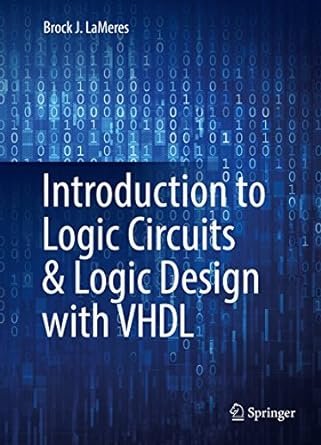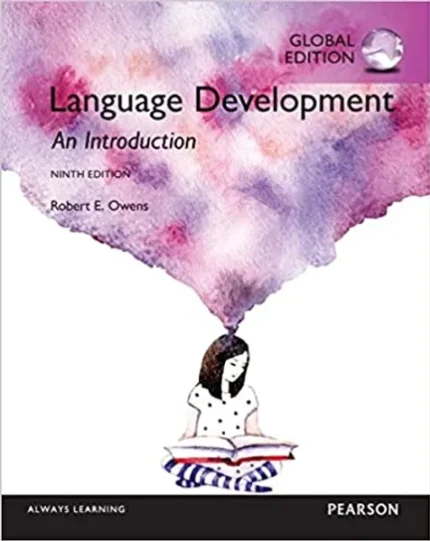Introduction to Logic Circuits , Logic Design with VHDL 1st ed. 2017 Edition
Editorial Reviews
Digital logic circuits form the backbone of modern electronics, from microprocessors to embedded systems. Introduction to Logic Circuits and Logic Design with VHDL by Brock J. LaMeres provides an in-depth exploration of fundamental logic circuit principles, equipping students, engineers, and professionals with essential skills for designing digital systems. The book seamlessly integrates theoretical concepts with practical applications, making it a valuable resource for learning both logic circuits and VHDL programming.
Overview of Introduction to Logic Circuits and Logic Design with VHDL
This book provides a clear and structured approach to learning digital logic circuits while incorporating VHDL (VHSIC Hardware Description Language) for practical implementation. It begins with fundamental concepts such as binary number systems, Boolean algebra, and logic gates before progressing to more complex topics like sequential logic and circuit synthesis.
Unlike traditional textbooks that focus solely on logic circuits, this book bridges the gap between theory and practice by integrating VHDL, a widely used hardware description language. The inclusion of simulation and synthesis concepts ensures that readers gain hands-on experience in designing and implementing logic circuits using FPGA (Field Programmable Gate Array) technology.
Key Topics Covered in the Book
1. Fundamentals of Digital Logic
The book starts with the basics of digital logic, including number systems, Boolean algebra, and logic gates. These foundational concepts provide the necessary background for understanding more complex circuit designs.
2. Combinational Logic Circuits
Combinational logic is a crucial aspect of digital design. Topics include logic minimization techniques (such as Karnaugh maps), multiplexers, decoders, encoders, and arithmetic circuits like adders and subtractors. These circuits are essential for data processing and computation in digital systems.
3. Sequential Logic and Memory Elements
Sequential circuits introduce the concept of memory elements such as flip-flops, latches, and registers. The book explores clocking mechanisms, finite state machines (FSMs), and counter design, which are critical in building microprocessors and control systems.
4. Introduction to VHDL Programming
VHDL is a powerful hardware description language used for modeling and simulating digital circuits. The book covers:
- Basic VHDL syntax and structure
- Writing combinational and sequential circuit descriptions
- Testbenches for verifying circuit functionality
- FPGA implementation techniques
5. Practical Circuit Design and FPGA Applications
Readers will learn how to apply their knowledge to real-world scenarios using FPGA technology. The book provides hands-on exercises that involve simulating and synthesizing logic circuits using industry-standard tools.
6. Troubleshooting and Optimization
Effective circuit design requires debugging and optimization. The book discusses troubleshooting techniques for logic circuits, power efficiency considerations, and ways to improve circuit performance.
Why Read Introduction to Logic Circuits and Logic Design with VHDL?
- Comprehensive Coverage: The book provides a balanced approach to both logic circuit design and VHDL programming.
- Hands-On Learning: Includes practical exercises and FPGA applications for real-world implementation.
- Industry-Relevant Skills: VHDL is widely used in embedded systems, making this book valuable for engineering students and professionals.
- Clear and Structured Approach: The author presents complex topics in an easy-to-understand manner, making the book suitable for beginners and advanced learners alike.
Who Should Read This Book?
- Engineering Students: Ideal for those studying electrical and computer engineering, as well as those interested in digital design.
- Electronics Professionals: Engineers and designers working on FPGA, ASIC, and embedded system projects will find this book useful.
- Educators and Researchers: A valuable resource for teaching digital logic design and VHDL programming.
- Self-Learners: Anyone looking to build a solid foundation in logic circuits and hardware design will benefit from this book.
Conclusion
Introduction to Logic Circuits and Logic Design with VHDL by Brock J. LaMeres is an essential guide for understanding digital logic circuits and learning VHDL programming. Covering topics from basic Boolean algebra to advanced sequential logic, the book provides a structured and hands-on approach to designing and implementing digital systems. With real-world FPGA applications and clear explanations, this book is an indispensable resource for students, engineers, and technology enthusiasts who want to master digital circuit design.
you may like .https://natashabookstore.com/books/modern-principles-of-economics/
Product details
- Publisher : Springer; Softcover reprint of the original 1st ed. 2017 edition (June 15, 2018)
- Language : English
- Paperback : 491 pages
- ISBN-10 : 3319816993
- ISBN-13 : 978-3319816999
- Item Weight : 2.77 pounds
- Dimensions : 7.01 x 1.11 x 10 inches












Reviews
There are no reviews yet.